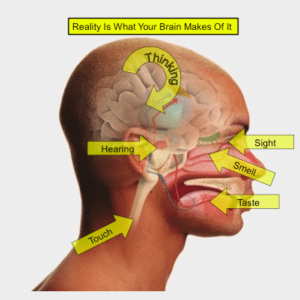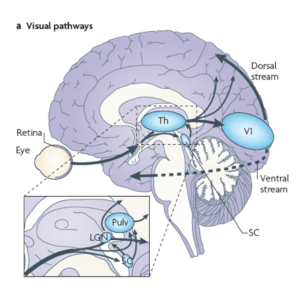A combinação do neuro e marketing envolve a fusão de dois campos de estudo (neurociência e marketing). O termo neuromarketing não pode ser atribuído a uma determinada pessoa, começando a aparecer organicamente por volta de 2002. Naquela época, algumas empresas norte-americanas como Brighthouse e SalesBrain foram as primeiras a oferecer serviços de pesquisa de neuromarketing e consultoria, promovendo o uso de métodos e conhecimentos do campo da neurociência cognitiva. Em termos simples, o neuromarketing sugere que compreender e prever o comportamento do consumidor deve incluir a perspectiva da neurociência. Um número crescente de livros foram publicados em neuromarketing, neurociência do consumidor, psicologia do consumo, neurociência cognitiva e áreas afins. Para mais informações, recomendamos que você vá para a nossa lista de livros favoritos clicando aqui.
A primeira pesquisa acadêmica de neuromarketing foi realizada por Read Montague, professor de neurociência da Baylor College of Medicine em 2003 e publicada na Neuron em 2004. O estudo pedia a um grupo de pessoas para beber ou Pepsi ou Coca-Cola , enquanto seus cérebros eram escaneados em uma máquina de ressonância magnética funcional . Embora as conclusões do estudo tivesessem sido interessantes e intrigantes , o Dr. Montague não forneceu uma base racional de como nosso cérebro lida com escolhas de marca . No entanto , o estudo revelou que as diferentes partes do cérebro são ativadas quando as pessoas estão conscientes ou não conscientes da marca que consomem. Especificamente, o estudo sugere que uma marca forte como a Coca Cola tinha o poder de ” apoderar” um pedaço de nosso córtex pré-frontal. O Cortex Pré Frontal gerencia a nossa atenção, controla a nossa memória de curto prazo , e executa uma boa parte do nosso pensamento , especialmente o planejamento. Assim, de acordo com o estudo, quando as pessoas sabem que estão bebendo Coca Cola , eles realmente dizem que preferem a marca Coca-Cola sobre Pepsi e seu Cortex Pré Frontal acende. No entanto, quando elas não sabem qual a marca que estão consumindo , eles relatam que preferem Pepsi em seu lugar. Neste último caso, a parte do cérebro que é mais ativo não é o Cortex Pré Frontal, mas uma estrutura do cérebro mais antiga situada no sistema límbico . Esta área do cérebro é responsável pelo nosso comportamento emocional e instintivo . O estudo Coca-Cola e Pepsi pode não ter sido suficiente para convencer muitos pesquisadores de marketing que a neurociência pode ajudar a decifrar o código neural de nossas decisões , mas certamente foi o suficiente para começar um novo campo. Desde então, centenas de estudos foram realizados , confirmando a correlação entre o comportamento do consumidor e a atividade cerebral.
Entendendo o cérebro como um alto consumidor de energia
A realidade é que o cérebro é responsável por todos os nossos comportamentos de consumo. Para executar esses comportamentos e escolhas, o cérebro precisa usar uma grande quantidade de energia. Mesmo o cérebro representando apenas 2 % da nossa massa corporal, ele queima cerca de 20% da nossa energia. E a maioria das decisões que nós precisamos fazer durante um dia são tomadas abaixo do nosso nível de consciência.
Isso explica porque usamos perto de 90% da energia do cérebro para manter o nosso estado de descanso ( rest estate) or default mode, um aspecto critico da função do cérebro que é realizada amplamente abaixo do nosso nível de consciência. Então parece que usamos 10% do nosso cérebro de forma consciente. Pior, nós não controlamos a maior parte da nossa atenção, uma vez que estamos constantemente monitorando o ambiente por potenciais ameaças. Pois nada é mais importante do que a nossa sobrevivência. Somos amplamentes controlados pela parte mais ancestral do nosso cérebro conhecida pelo complexo R ou cérebro reptilano. Essa estrutura inclui o tronco cerebral e parte do sistema limbico. O sistema reptiliano tem se desenvolvido ao longo de milhões de anos.
Ele é pré- verbal, não entende mensagens complexas e procura evitar a dor sobre as emoções. É a parte do cérebro que nos faz torna extremamente egoístas e nos leva a preferência de buscar por atalhos mentais. O aspecto mais poderoso do cérebro réptiliano é o fato dele ser capaz de processar os estímulos visuais sem o uso do córtex visual . É por isso que nós preferimos imagens sobre as palavras e explicações .
António Damasio, um famoso e respeitado neurocientista disse : “Não somos máquinas pensadoras que sentem , somos maquinas de sentimentos que pensam ”









